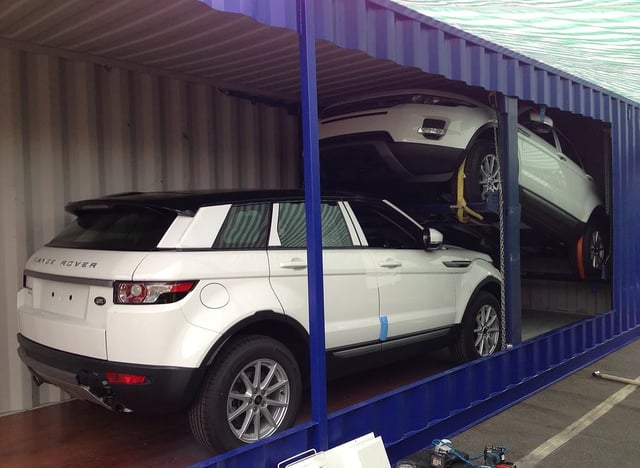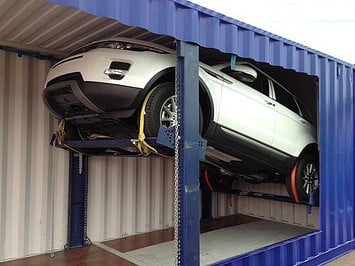
There are many ways to transport vehicles from one location to another, but which of them is the best way for your project or route? As most journeys of any length require multiple modes of transport, often it comes down to a choice of cost vs time. Vehicles can be moved by sea, rail, road, and air.
When reviewing your car transport options, consideration must be given to the method (or methods) that minimise handling, reduce risk of damage, and give the most cost-effective route to your good’s destination.
1) Moving Cars By Water
Depending on the type of ship doing the transporting, there may only be a limited number of ports available for ship transport. Also, a ship will never take your cars the whole length of a journey. Once a ship reaches the shore, inland transport will need to be arranged by rail or road. If using a RoRo ship, this will involve transfer and handling of your vehicles, thus increasing the risk of damage.
The size of the ship will affect your carrying capacity and your cost per unit, and there will normally be a choice of several routes. However, it's important to note that the larger the ship, the fewer ports that will be able to accommodate it. In the case of RoRo ferries, which require deep water ports, this can mean a much longer time to get cars to their destinations.
Shipping by barge can be one of the more effective car transport options, but here again, it’s important to consider factors like the length of time taken to travel from location to location, as well as the cost to do this. Transport barges can travel through inland waterways such as shipping canals, which can make them ideal when vehicles need to be transported locally.
2) Moving Cars By Rail
Rail transport offers a fast and environmentally-friendly means of getting vehicles from one location to another, provided they are both on the same landmass. This option is time-efficient because rail is rarely delayed by traffic congestion. Despite this, rail presents its difficulties for logistics planners. It can be inflexible, and may not be economically viable unless moderate to large volumes are being shipped over large distances.
Road haulage at both sides of the train journey will also need to be factored in, which will add to the overall cost. However, when space on the train is used effectively, the logistics cost for shipping by rail can be greatly reduced.
3) Moving Cars By Road
Road is a popular means of transporting cars over short distances. Almost without exception a journey will include a ride on a car transporter, even if this is only half a mile from the port to car dealership. Transport trailers are available in several sizes, from those small enough for a single vehicle, to large, multi-vehicle types. Transporters can be open in a flatbed style, or enclosed for protecting expensive or classic vehicles as they travel from one location to another.
Enclosed trailers have a lower vehicle capacity that comes at a higher cost per vehicle than open car transporters, but offer a higher degree of security. Enclosed transporters also remove the risk of weather damage, scratches from road-based gravel etc.
The option that is best will depend on the amount of additional security needed and your available budget. All road journeys are subject to traffic delays, which can have a knock-on effect with other transfers. They are also fairly expensive, as even the largest car transporters can’t carry as many cars as a train or ship.
4) Moving Cars By Air
Moving cars by air is a time-efficient means of getting vehicles to their destination. Heavy cargo planes can transport a small number of vehicles quickly to any destination.
However, transporting cars by air can be prohibitively expensive, and only a certain number of vehicles can be transported per flight. This low capacity means air transport is not realistic for most projects. It is however, useful for motor shows, particularly with new and concept vehicles that have only just been produced.
Containers For Multimodal Transport
Regardless of the car transport options chosen, handling and damage risk can be reduced by containerising your vehicles. Containerisation gives you a wide choice of logistics options, because the containers can simply be lifted from one transport mode to the next by crane without anyone having to get behind the wheel of your vehicles.
The traditional problem with containerisation is its low carrying capacity – leading to higher costs per unit. However, using a modern racking solution such as R-RAK can double a container’s capacity, as well as allow you to ship different types of vehicle within the same container.
When the maximum number of vehicles is loaded into a container, the cost for transport per vehicle can be greatly reduced. Containerisation is therefore a great means of transporting cars via any combination of transport method to your final destination.
The Benefits Of Containerisation
Find out more about the advantages of shipping containers for car transport in our new Containerised Car Transport Guide. This free eBook explains how container shipping gives you the widest range of flexible logistics options, while reducing damage and saving you money. Click here to download your copy.















